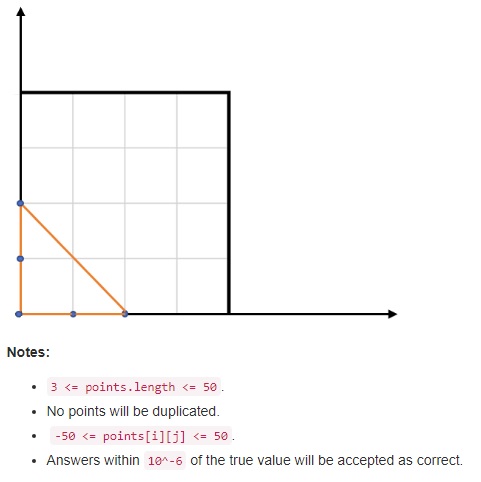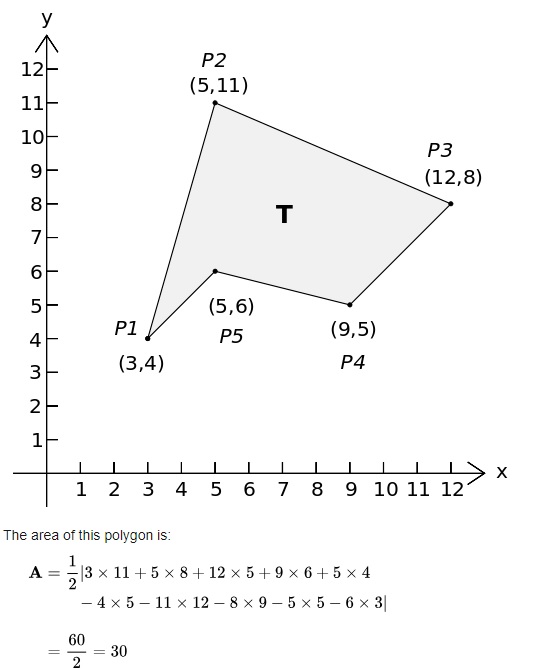You have a list of points in the plane. Return the area of the largest triangle that can be formed by any 3 of the points.
Example:
Input: points = [[0,0],[0,1],[1,0],[0,2],[2,0]]
Output: 2
Explanation:
The five points are show in the figure below. The red triangle is the largest.
Given any three points, we know how to compute its triangle area, therefore, we can iterate all points in O(n^3) loops for each possible three points combination.
1 2 3 4 5 6 7 8 9 10 11 12 13 14 15 | class Solution { public: double largestTriangleArea(vector<vector<int>>& points) { double value = -1; int sz = points.size(); for (int i = 0; i < sz; ++ i) { for (int j = i + 1; j < sz; ++ j) { for (int k = j + 1; k < sz; ++ k) { value = max(value, area(points[i], points[j], points[k])); } } } return value; } } |
class Solution {
public:
double largestTriangleArea(vector<vector<int>>& points) {
double value = -1;
int sz = points.size();
for (int i = 0; i < sz; ++ i) {
for (int j = i + 1; j < sz; ++ j) {
for (int k = j + 1; k < sz; ++ k) {
value = max(value, area(points[i], points[j], points[k]));
}
}
}
return value;
}
}To compute the area of the Triangle based on three coordinates, we can use the Shoelace formula, which is used to compute the area of any given 2D polygon shapes/coordinates.
The formula can be expressed by the following equation:

Where A is the area of the polygon and there are n sides of the polygon and x_i, y_i are the coordinates/corners of the polygon.
Example: the polygon made by points (3,4), (5,11), (12,8), (9,5), and (5,6), which can be illustrated in the following:
The C++ function to compute Triangle Area based on Shoelace algorithm
The shoelace could be quite useful in computing triangle area given 3 coordinates/corners of the triangle.
1 2 3 4 | double area(vector<int> P, vector<int> Q, vector<int> R) { return 0.5 * abs(P[0] * Q[1] + Q[0] * R[1] + R[0] * P[1] - P[1] * Q[0] - Q[1] * R[0] - R[1] * P[0]); } |
double area(vector<int> P, vector<int> Q, vector<int> R) {
return 0.5 * abs(P[0] * Q[1] + Q[0] * R[1] + R[0] * P[1]
- P[1] * Q[0] - Q[1] * R[0] - R[1] * P[0]);
}–EOF (The Ultimate Computing & Technology Blog) —
a WordPress rating system
Last Post: How to Count Number of Segments in a String?
Next Post: How to Check If An Array is Monotonic?

